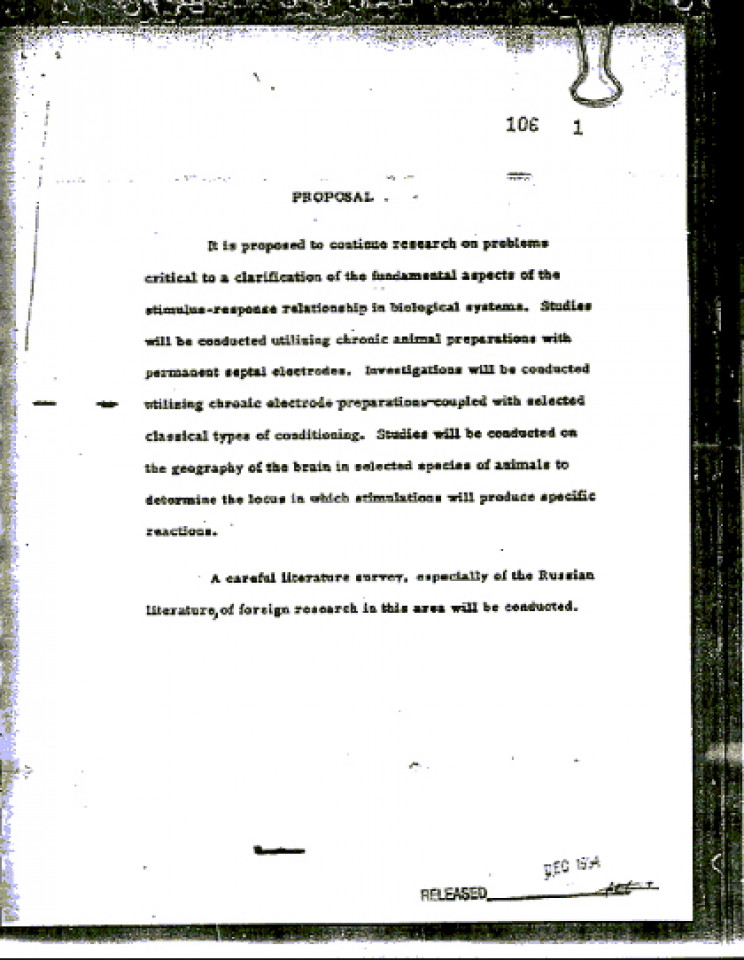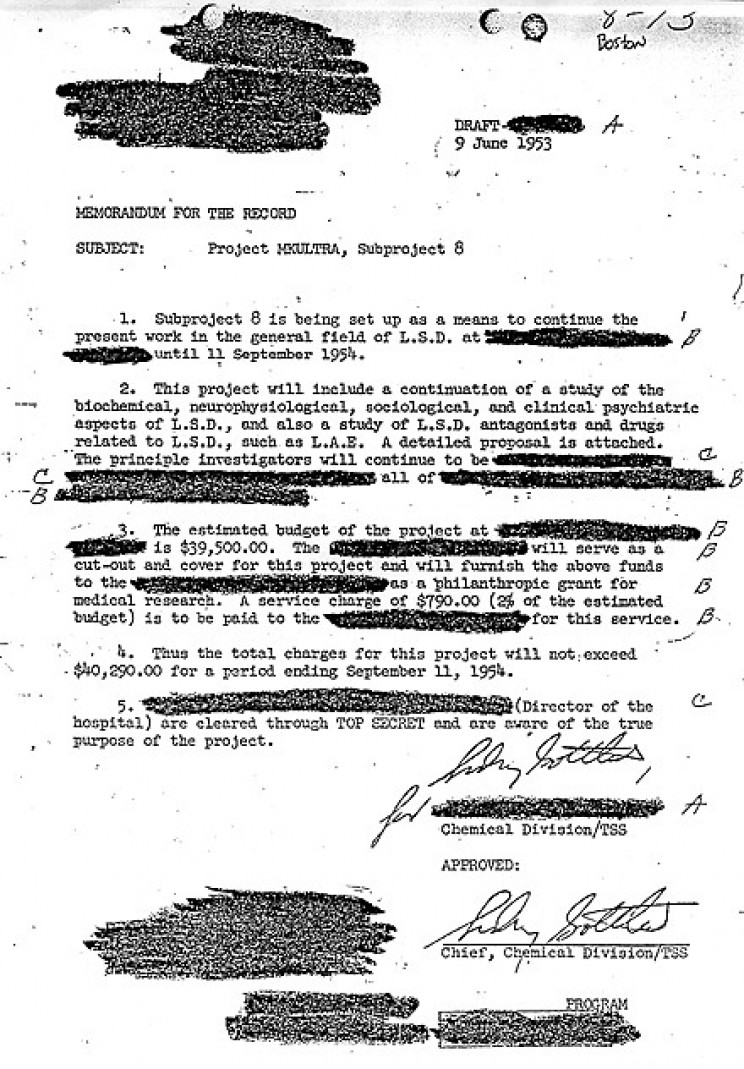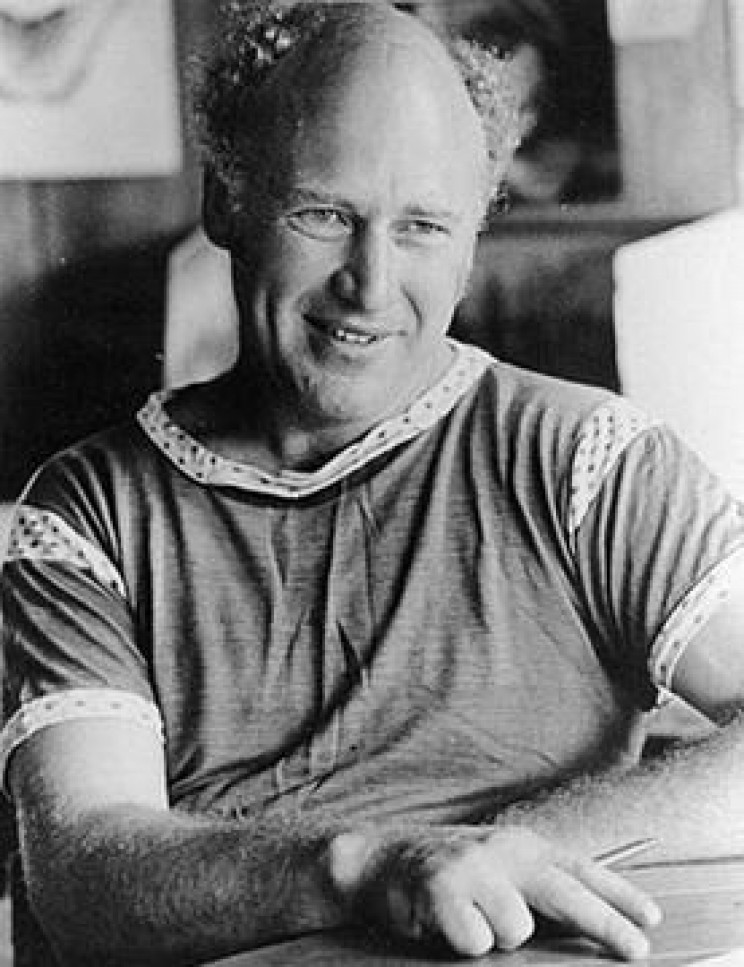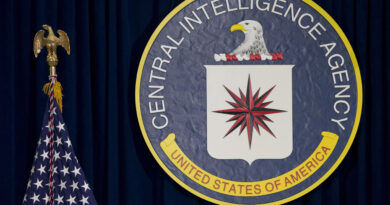The CIA’s Mind Control and LSD Program MK-Ultra
In 1953, the period following the Korean War was an uneasy one in the United States, which saw itself in a life or death struggle with the Soviet Union. Increasingly, the U.S. saw an entirely new field of battle in the human mind.
In 1952, Allen Dulles was appointed director of the U.S.’ Central Intelligence Agency (CIA). Speaking to a group of Princeton University alumni on April 10, 1953, Dulles expressed his concern saying, “I wonder, however, whether we clearly perceive the magnitude of the problem, whether we realize how sinister the battle for men’s minds has become in Soviet hands. We might call it, in its new form, ‘brain warfare.’”
RELATED: CAN YOU CONTROL A VEHICLE BY USING YOUR MIND?
Movies such as 1962’s The Manchurian Candidate reflected the fears of that time. It portrayed a former prisoner of war who is brainwashed and becomes an unwitting assassin for an international Communist conspiracy.
MK-Ultra
On April 13, 1953, Dulles approved the MK-Ultra Program, which was a top-secret program that would use biological and chemical materials, hypnosis, sensory deprivation, isolation, verbal and sexual abuse and torture to extract information from the enemy, and render him incapacitated.

A goal of the program was to produce a “truth serum” for extracting information from suspected Soviet spies. The CIA also hoped to use hypnosis to increase the ability to learn and recall complex information, and to recall complicated arrangements of physical objects.
Some of the stated goals of the MK-Ultra program were to create substances that would:
1. Promote illogical thinking and impulsiveness so that a recipient would be discredited in public
2. Increase mental activity and perception
3. Cause a victim to age faster or slower
4. Cause temporary or permanent brain damage and loss of memory
5. Enhance the ability to withstand privation, torture, and coercion during interrogation
6. Produce amnesia for events both preceding and during their use
7. Produce shock and confusion over extended periods of time
8. Produce physical disablement, such as paralysis of the legs
9. Alter personality structure causing the recipient to become dependent upon another person
10. Lower ambition and working efficiency
11. Weaken or distort eyesight or hearing
12. Knock someone out and be surreptitiously administered in drinks, food, cigarettes, or as an aerosol
13. Make it impossible for someone to perform physical activity.
LSD was the preferred drug of choice
44 colleges and universities, 15 research foundations and pharmaceutical companies, 12 hospitals and clinics, and three penal institutions across North America were used for MK-Ultra research that included administering LSD, painkillers, and other drugs.
The first medical centers to receive grants were Boston Psychopathic Hospital (later renamed Massachusetts Mental Health Center), New York’s Mt. Sinai and Columbia hospitals, the University of Illinois Medical School, and the Universities of Oklahoma and Rochester.

The CIA was especially interested in LSD, or lysergic acid diethylamide, which was first discovered in Switzerland in 1938. LSD produced mental states similar to those known to occur in schizophrenia: depersonalization, psychic disorganization, and disintegration. The major effect of the drug was the breakdown of a subject’s character defenses for handling anxiety, which was just what the CIA was looking for.
The CIA administered LSD to their own employees, military personnel, doctors, government agents, and members of the general public, often without their knowledge or informed consent. This is a violation of the Nuremberg Code which is a set of research ethics principles for human experimentation that was created as a result of the Nuremberg trials at the end of WWII.
While he was a graduate student at Stanford University, writer Ken Kesey worked nights at the Menlo Park Veterans’ Hospital, which had been given LSD to test. Kesey volunteered to take psychoactive drugs such as LSD and psilocybin.

What came out of Kesey’s experiences with psychoactive substances was his acclaimed novel One Flew Over the Cuckoo’s Nest. Kesey was so enamored of LSD that he went on to form the “Merry Pranksters“, a group that traveled around the U.S. in a psychedelically painted bus named “Furthur”, and encouraged everyone they met to try LSD.
The Merry Pranksters and Kesey were unforgettably portrayed by author Tom Wolfe in his 1968 book, The Electric Cool Aid Acid Test.
Other test subjects included prisoners who were especially easy to sign up to be test subjects in exchange for additional privileges or a commuted sentence.
In 1957, the F.B.I.’s former “most wanted” man, Whitey Bulger was serving a sentence at an Atlanta penitentiary when he signed up to be a test subject. Bulger wrote about his experience taking LSD: “Total loss of appetite. Hallucinating. The room would change shape. Hours of paranoia and feeling violent. We experienced horrible periods of living nightmares and even blood coming out of the walls. Guys turning to skeletons in front of me. I saw a camera change into the head of a dog. I felt like I was going insane.”
Across the border in Montreal, Canada, inhuman experiments were being conducted by British psychiatrist Donald Ewen Cameron at the Allan Memorial Institute of McGill University. On patients who had come into the hospital suffering from relatively mild conditions such as anxiety or postpartum depression, Cameron subjected them to electroconvulsive therapy at thirty to forty times the normal power, paralytic drugs, and he put them into drug-induced comas for up to three months at a time.
Not surprisingly, many of these patients suffered permanent effects, while at the same time, Cameron became the first chairman of the World Psychiatric Association and president of the American and Canadian psychiatric associations. Author John Marks chronicled these shameful events in his 1979 book, The Search for the Manchurian Candidate.
The beginning of the end
In 1953, Ph.D. biochemist Frank Olson was assigned to the Army’s Chemical Corps’ Special Operations Division (SOD) at Fort Detrick, Maryland. He attended a three-day working SOD-CIA retreat at an isolated lodge in western Maryland, where the head of MK-Ultra, Dr. Sidney Gottlieb was also present.
Gottlieb laced a bottle of Cointreau with LSD and offered it to the guests. While the others soon recovered, Olson continued to experience anxiety and mental confusion for days after being dosed. The CIA moved him to New York City to see a doctor affiliated with the MK-Ultra Program who believed he could help Olson. Instead, Olson went out the window of his 13th story hotel room, possibly voluntarily, and left behind a wife and three children. Olson’s death was attributed to suicide.
In December 1974, the New York Times writer Seymour Hersh published a story about the CIA’s misdeeds which prompted then-President Gerald Ford to appoint his Vice-President Nelson Rockefeller to head of a blue-ribbon panel to investigate.
The report by the Rockefeller Commission described the death of an unnamed civilian who had been given LSD by the CIA then had plunged from a New York hotel window. The Olson family recognized their husband and father, and sued the U.S. government. They received $750,000 from Congress, and a personal apology from President Ford.
In 1976, President Ford issued an Executive Order which prohibited “experimentation with drugs on human subjects, except with the informed consent, in writing and witnessed by a disinterested party, of each such human subject.” Later Executive Orders by Presidents Jimmy Carter and Ronald Reagan expanded this directive to apply to any human experimentation.
In 1977, former Massachusetts Senator Edward Kennedy oversaw congressional hearings that investigated the effects of the MK-Ultra Program. The hearings were unable to consult MK-Ultra records because in 1973, CIA director Richard Helms had insisted that all records relating to the program be destroyed. However, a cache of 20,000 documents that had been misfiled survived, and they were investigated during the 1977 Senate Hearings.
In a November 27, 2012 New York Times article, Frank Olson’s son Eric said of the battle to learn the truth about his father’s death, “We want justice. This has cost me an immense amount of time and years of my life.”
[embedded content]
MK-Ultra is a popular trope
The MK-Ultra Program has been portrayed in books and movies, such as the 1990 film, Jacob’s Ladder, 1997’s Conspiracy Theory, 2015’s American Ultra, and in the various Jason Bourne books and movies starring Matt Damon and written by Robert Ludlum.
On television, it was portrayed in the 1998 Canadian series The Sleep Room, and in season 1 of Stranger Things where Dr. Martin Brenner was involved in MK-Ultra, and Eleven was born to an MK-Ultra test subject. The 2017 Netflix documentary Wormwood tells the story of Frank Olson.
Stephen King’s novel Firestarter is based on MK-Ultra, the game Call of Duty: Black Ops concerns the game’s protagonist being turned into a Soviet sleeper agent, and the company T.H.Seeds of Amsterdam named one of its cannabis strains MK-Ultra.
*** This article has been archived for your research. The original version from Interesting Engineering can be found here ***


